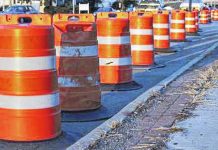The images of the devastation caused by Hurricane Harvey are fresh and draw immediate comparisons to Katrina, which was just one of four major hurricanes to hit the U.S. in 2005 (preceded by Dennis and followed by Rita and Wilma).
Prior to Harvey, the most recent notorious storms to hit the U.S. were Hurricanes Matthew (2016) and Sandy (2012). In fact, according to the NOAA National Centers for Environmental Information ncdc.noaa.gov/billions/events/US/1980-2017, the U.S. has sustained 212 weather and climate disasters since 1980 in which damages exceeded $1 billion, with cumulative damages in excess of $1.2 trillion Harvey was the 10th such disaster of 2017.
Weather forecasting and investing are both probabilistic endeavors. Floods are sometimes referred to as “100- or 500-year events,” but it’s important to understand these terms refer to the chance of a flood happening in a given year, not the timing. A 100-year flood theoretically has a 1 percent chance of happening in a given year, but that doesn’t mean it will happen only once a century or can’t happen in consecutive years. When you flip a coin, heads and tails have the same 50 percent probability, but it’s certainly possible to have a string of 5 or 10 in a row.
According to Vox, from August 2015 to August 2016, there were eight 500-year flood events recorded by the National Weather Service and three 1000-year flood events in each of 2015 and 2016. Harvey will likely be the Houston area’s third 500-year flood in the past three years.
Whether climate change is increasing the probabilities of weather disasters or we’re just having a run of “bad luck,” the need for protection is obvious.
Property owners typically purchase an insurance policy from Company A, which in turn lays-off a portion of the risk by purchasing “reinsurance” from Company B. Catastrophe or “CAT” bonds were invented in 1994 after Hurricane Andrew (1992) created about $25 billion in insured losses in Florida, leading to the bankruptcy of numerous insurers.
“CAT” bonds enable insurers to transfer risk to bondholders. With traditional bonds, the issuer defaults when it becomes insolvent and unable to pay scheduled interest and principal. With “CAT” bonds, the issuer defaults when 1) a specified catastrophe 2) hits a particular place 3) before the bond matures (typically three years). In essence, “CAT” bondholders are betting catastrophe won’t strike.
There are four types of “triggers” that can cause a “CAT” bond to default:
1. Indemnity trigger: covers claims paid by the issuer over a threshold amount.
2. Industry loss trigger: based on claims paid by all insurers on the extreme event.
3. Parametric trigger: based on occurrence of a specific extreme event (i.e. Category 5 hurricane).
4. Modeled trigger: based on claims estimated by a computer model.
“CAT” bonds are popular as they offer relatively high returns that are also uncorrelated with the economy or stock/bond markets. The issuer invests the principal received from the bondholders in ultra-safe securities. The income earned is combined with premiums received from policyholders to pay above-market rates to the bondholders. If no default is triggered, the principal is returned at maturity.
With tightly-defined triggers, there have been relatively few defaults for the 230 “CAT” bonds issued since 1994, but only time will tell if CATs have nine lives.
Mickey Kim is the chief operating officer and chief compliance officer for Columbus-based investment adviser Kirr Marbach & Co. Kim also writes for the Indianapolis Business Journal. He can be reached at 812-376-9444 or [email protected].




